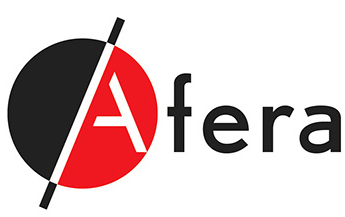
Packaging and Packaging Waste Regulation (PPWR)
In this section you will find:
- What is the PPWR?
- How is this relevant for the adhesive tape industry?
- Status of legislative process
- Timeline of measures
- How is Afera reacting to the PPWR?
- References
What is the PPWR?
The PPWR is a key regulation proposed by the European Union aimed at reducing packaging waste and the environmental impact of packaging. The adoption of the PPWR as a regulation highlights the E.U.’s commitment to ensuring faster and more consistent implementation of sustainability standards across all Member States. It reduces administrative complexity and provides clear, unified rules for businesses and governments, ensuring everyone works toward the same environmental goals.
The European Commission formally proposed the PPWR on 30 November 2022, setting the essential requirements for the packaging materials to which all packaged products must adhere. Establishing uniform rules across all E.U. Member States, the PPWR replaces the Packaging and Packaging Waste Directive (PPWD) (Directive 94/62/EC), modernising and strengthening the framework to meet today’s environmental and market challenges.
These are the overarching goals of the PPWR:
How is this relevant for the adhesive tape industry?
For the adhesive tape industry, the PPWR has several important implications:
Sustainability and recycling requirements
Adhesive tapes used in packaging must meet stricter recyclability criteria. This means adhesive tapes used in packaging must be designed to not hinder the sorting and recycling of the packaging waste streams.
Recycled content mandates
The regulation imposes minimum recycled content requirements for plastic components of packaging, which may affect packaging tapes. Adhesive tape manufacturers will need to incorporate post-consumer recycled plastics where necessary.
Reduction of excess packaging
Tapes must align with efforts to reduce unnecessary packaging waste, potentially influencing design considerations such as adhesive strength, size, and efficiency. The shift toward lightweight and high-performance tapes may become critical as companies aim to meet waste reduction goals without compromising functionality.
Labelling and reporting
Packaging materials will be identified in a harmonized way to facilitate their recycling. Suppliers of packaging tapes will need to provide their customers with information on sustainability to fullfill the reporting requirements.
Cross-sector collaboration
PPWR emphasises the importance of collaboration across the supply chain, meaning adhesive tape manufacturers must work closely with packaging producers, recyclers, and end-users to ensure compliance and optimise recycling systems.
Status of legislative process
As of January 2025, the PPWR has been officially adopted by the European Union. The regulation was published in the Official Journal of the European Union on 22 January 2025 and entered into force on 11 February 2025. Its general application will commence 18 months after this date, around August 2026, with certain provisions having longer transition periods.

Timeline of measures
While the core Regulation has been approved, the measures will only be implemented according to several reports and secondary pieces of legislation.

Where are we now?
- December 2025: Deadline for draft DfR guidelines, which are currently being discussed by two working groups in CEN (European Committee for Standardisation): CEN TC261/SC4/WG10 plastic packaging and CEN TC261/SC4/WG3 for the other packaging materials. Afera participates of CEN discussions.
- By 2026: ECHA will prepare a report on Substances of concern for packaging. This means substances that are hazardous for human health or the environment or that hinder recycling. The report is expected to build on the negative list from an earlier draft of the legislation.
How is Afera reacting to the PPWR?

26 October 2022: In a position paper in response to the revised PPWD, Afera expressed concern over the plans of the European Commission to propose a negative list of packaging characteristics. Afera pointed out that the list did not seem to be based on the most up-to-date developments on materials and recycling. Its presence would hinder further development of recycling technologies, and the legal process for its implementation would fail to provide regulatory certainty to industry. Instead, Afera proposed to strengthen the definition of criteria for Design for Recycling (DfR) in a technology agnostic manner. The E.C. ultimately presented the PPWR without the negative list.
 23 April 2023: Based on input from our Members, Afera submitted feedback on the European Commission’s proposal to revise the Packaging and Packaging Waste Directive on packaging definition (release liner, tapes with packaging application and tapes w/o packaging application), recycled content, post-consumer recycling, reusable packaging targets, and design for recycling guidelines.
23 April 2023: Based on input from our Members, Afera submitted feedback on the European Commission’s proposal to revise the Packaging and Packaging Waste Directive on packaging definition (release liner, tapes with packaging application and tapes w/o packaging application), recycled content, post-consumer recycling, reusable packaging targets, and design for recycling guidelines.

6 December 2024: Under the PPWR, it is ultimately the responsibility of the manufacturer of the packaged product to ensure packaging is compliant with PPWR requirements. Suppliers of packaging material must provide manufacturers with necessary information to ensure compliance.
This document, a common position of the European adhesive tape and film industry grouped under Afera, aims to clarify the status of adhesive tapes and films within the PPWR for our entire supply chain, including for users of adhesive tapes.
Afera’s PPWR taskforce within the Regulatory Affairs Working Group drafted a position paper defining the status of specific tape products as packaging or not packaging. Adhesive films marketed as “surface protection products”, “process films” and “protective films” make up the biggest grey area in the definition of packaging. This document will also serve as the starting point for drafting a decision tree for the Afera Design for Recycling (DfR) Guidelines which the AFSP WS3 is working on.
Businesses involved in packaging within the E.U. should prepare for compliance by reviewing the regulation's requirements and planning necessary adjustments to their packaging processes and materials. Afera’s aim is to translate the PPWR for the adhesive tape industry so that it is aware of what the regulation will mean in the packing of the own product, regardless of whether it is considered packaging or not. Afera Members need to learn how to follow DfR criteria, i.e. what types of packaging are prohibited from use. They also need to understand the requirements of imported products and how fair competition can be ensured between European and imported products. Afera is working to provide valuable feedback to legislators in these areas.

